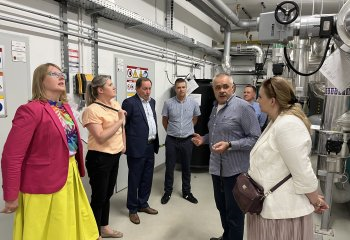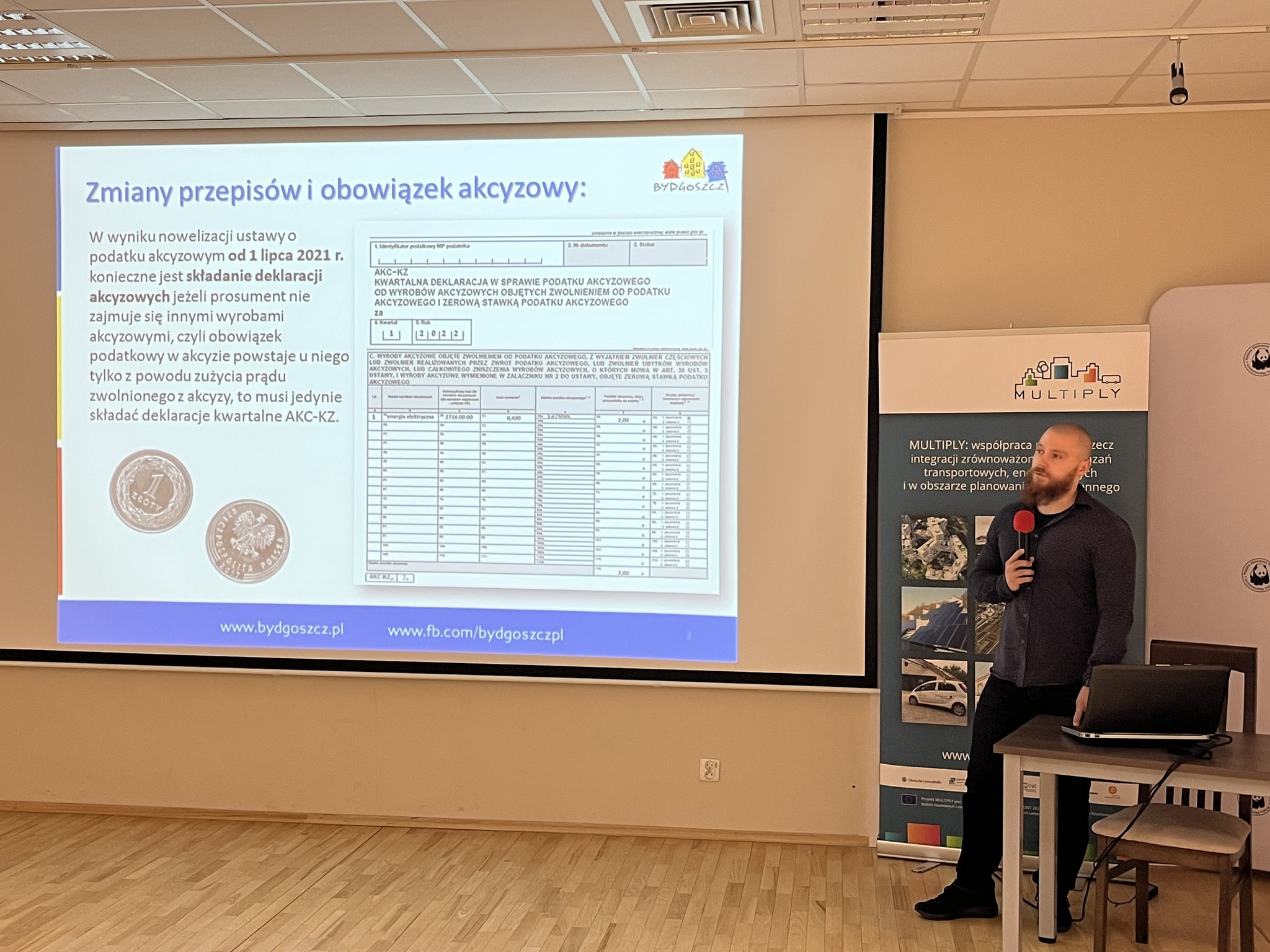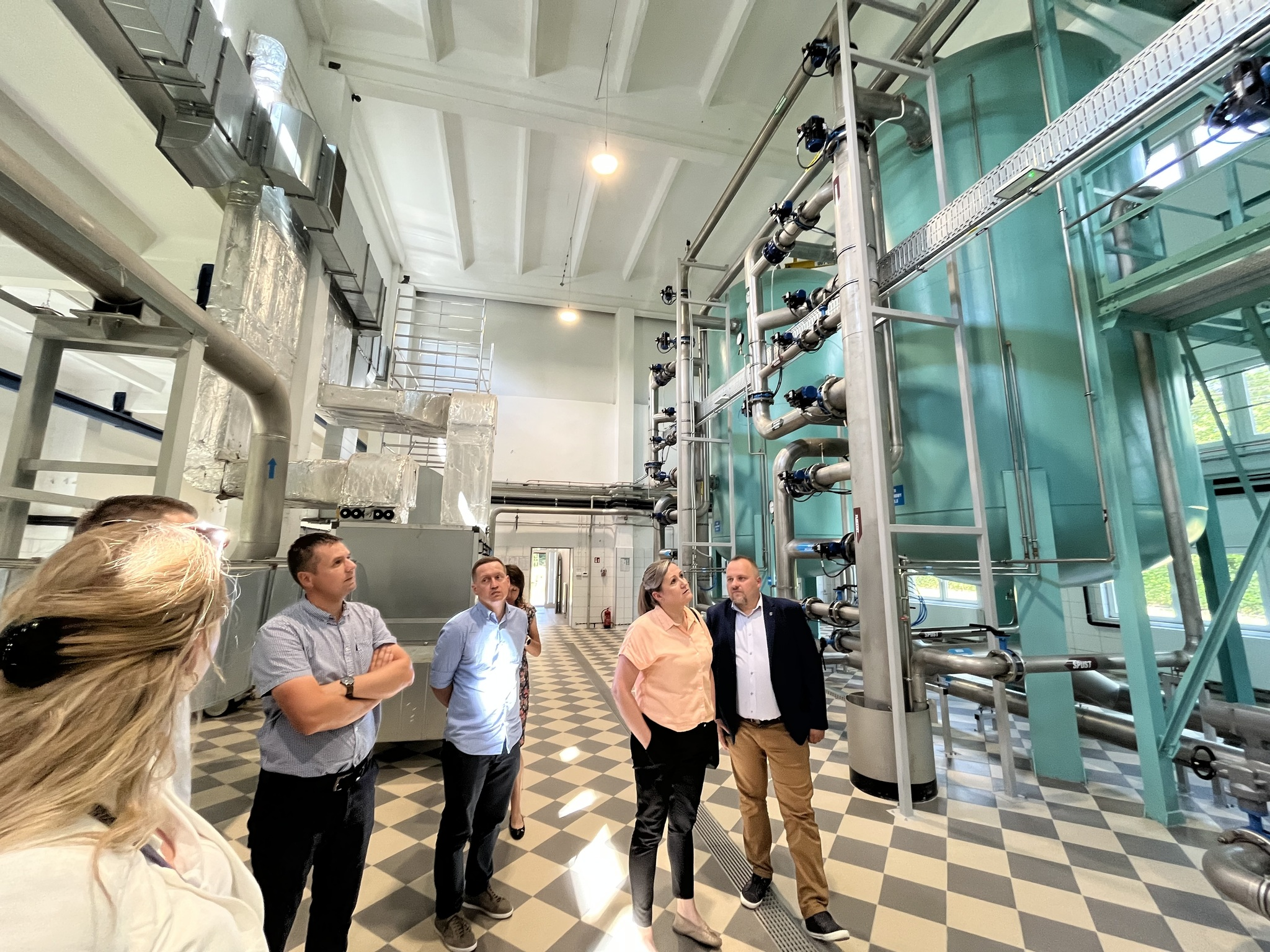 Integrated local action for energy and climate was the topic of the meeting that took place on June 23-24 in Mińsk Mazowiecki. The participants had the opportunity to share their experiences as well as listen to experts’ presentations. A study visit, during which interesting from the perspective of energy and climate management facilities in Mińsk Mazowiecki were visited, was also a part of the event.
Integrated local action for energy and climate was the topic of the meeting that took place on June 23-24 in Mińsk Mazowiecki. The participants had the opportunity to share their experiences as well as listen to experts’ presentations. A study visit, during which interesting from the perspective of energy and climate management facilities in Mińsk Mazowiecki were visited, was also a part of the event.
Thursday began with the welcome of the participants by Anna Jaskuła, Executive Director of the Association of Municipalities Polish Network "Energie Cités" (PNEC) and Eliza Bujalska, mayor of Mińsk Mazowiecki, who then demonstrated the activities of the EUROPE DIRECT point. The point's task is to familiarize citizens with European issues and encourage them to participate in debates on the future of the EU. Then, Patrycja Płonka, project manager at PNEC, took the floor, presenting the effects of the MULTIPLY project implemented for over three years, concerning integrated urban planning, combining elements of sustainable transport, spatial planning and energy management.
 The experiences of Bydgoszcz in one of these areas - sustainable energy management in the commune - were shared by Michał Gruszczyński from the Energy Management Team of the City of Bydgoszcz. The topic of energy was also addressed in the presentation by Romuald Meyer from Pomorska Grupa Konsultingowa S.A., who explained how to combine the energy balance of the commune with the economic efficiency of the measures taken. After his speech, which also touched on economic issues, Anna Fijas from PNEC presented possible sources of financing investments and soft activities in the current financial view point.
The experiences of Bydgoszcz in one of these areas - sustainable energy management in the commune - were shared by Michał Gruszczyński from the Energy Management Team of the City of Bydgoszcz. The topic of energy was also addressed in the presentation by Romuald Meyer from Pomorska Grupa Konsultingowa S.A., who explained how to combine the energy balance of the commune with the economic efficiency of the measures taken. After his speech, which also touched on economic issues, Anna Fijas from PNEC presented possible sources of financing investments and soft activities in the current financial view point.
Eliza Bujalska took the floor again to share the experiences of Mińsk Mazowiecki, this time regarding the involvement of residents in planning city's development as part of the Human Smart City project. The last presentation that day belonged to Izabela Kuśnierz from PNEC, who talked about the monitoring of the implementation of activities, its key elements and the procedure for monitoring SECAP plans.
After the presentations, it was time for the workshop during which the participants talked about the challenges they face in the context of integrated energy planning. They mentioned here, among others, lack of financial possibilities, lack of commitment and low level of environmental awareness of the inhabitants and staffing problems. The needs that the participants of the event articulated in this area include, from the perspective of local governments, the facilitation of administrative procedures or the possibility of financing soft activities, and from the perspective of the inhabitants, reducing traffic jams in the city or improving the quality of life. The current representatives of local governments also shared their plans for the future - they plan, among others, development of a network of city bikes, greater and more effective encouragement of residents to participate in urban projects or increasing the share of renewable energy sources in energy mix.
 Participants devoted the afternoon to a study visit, during which they visited the PEC cogeneration plant commissioned in 2020, the "Kędzierak" water treatment station and the nearby photovoltaic farm, modern Municipal Kindergarten No. 5, Władysław Bartoszewski Square with a rainy garden, which was created after the revitalization of the garage area and "Serbinów", a common space that was created in cooperation with the residents as part of the Human Smart City project and was put into use in 2022.
Participants devoted the afternoon to a study visit, during which they visited the PEC cogeneration plant commissioned in 2020, the "Kędzierak" water treatment station and the nearby photovoltaic farm, modern Municipal Kindergarten No. 5, Władysław Bartoszewski Square with a rainy garden, which was created after the revitalization of the garage area and "Serbinów", a common space that was created in cooperation with the residents as part of the Human Smart City project and was put into use in 2022.
Friday began with a presentation by Patrycja Płonka, who discussed the EU climate and energy policy and the role of local governments in its implementation. This role is well understood and particularly effectively undertaken by the signatories of the Covenant of Mayors for climate and energy, therefore the goals and scope of this initiative were the subject of the next speech. In her presentation, Anna Jaskuła also introduced the current Polish signatories to the CoM and encouraged other communes to join this initiative. Then Patrycja Płonka took the floor again, presenting how the baseline emission inventory should look like and the analysis of the sensitivity and vulnerability of the city to climate change, which are the main elements of the Sustainable Energy and Climate Action Plan. Anna Fijas from PNEC showed how such a model SECAP Plan should look like. She also presented examples of adaptation and mitigation measures that can be included. After a short break, Anna Jaskuła went back to the topic of the Covenant of Mayors and presented many instruments and support mechanisms that the Covenant signatories can use. One of the initiatives she mentioned was the Energy Poverty Advisory Hub (EPAH), the methodology of which was developed working with the Covenant. This topic was deepened by Izabela Kuśnierz in her presentation on how energy poverty is influenced by the energy transformation of cities. Then, Miłosz Gutjar from the Sztum City and Commune Office presented how, in practice, being a signatory to the Covenant of Mayors impacted Sztum's activities. The event was summed up and concluded by Anna Jaskuła.
The seminar "Integrated local actions for energy and climate" was a great opportunity to learn about the results of interesting projects, such as MULTIPLY or Human Smart City, and to broaden ones knowledge in the field of sustainable energy planning in the commune, or local measures to adapt to climate change. Participants learned not only from experts, but also from each other, willingly exchanging their experiences and insights. It was especially visible during a very successful workshop segment. Thanks to the study visit, the participants also had the opportunity to visit facilities where environmentally friendly solutions were implemented. The knowledge gained during the event will definitely be useful for participants when planning their next energy and climate action.








